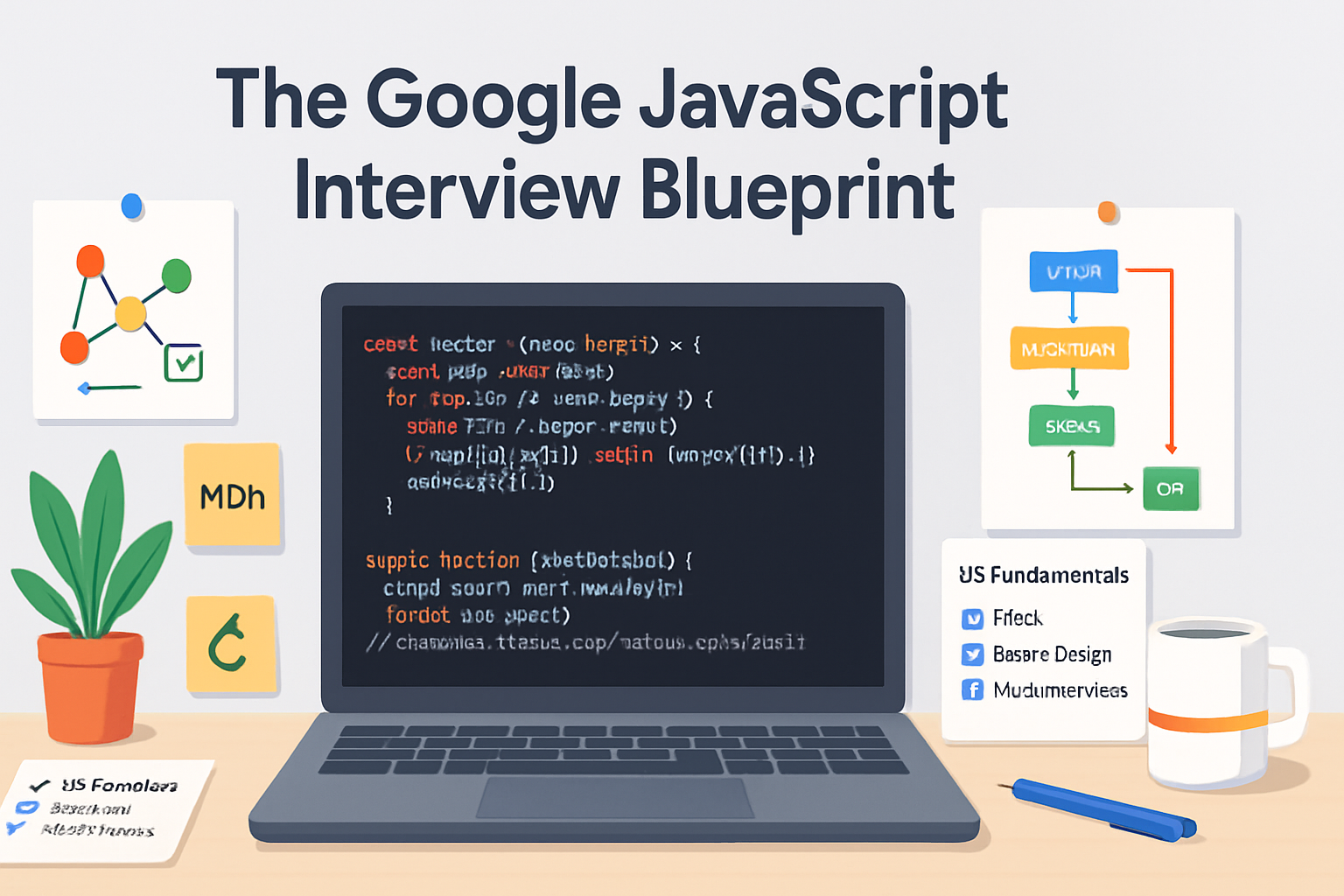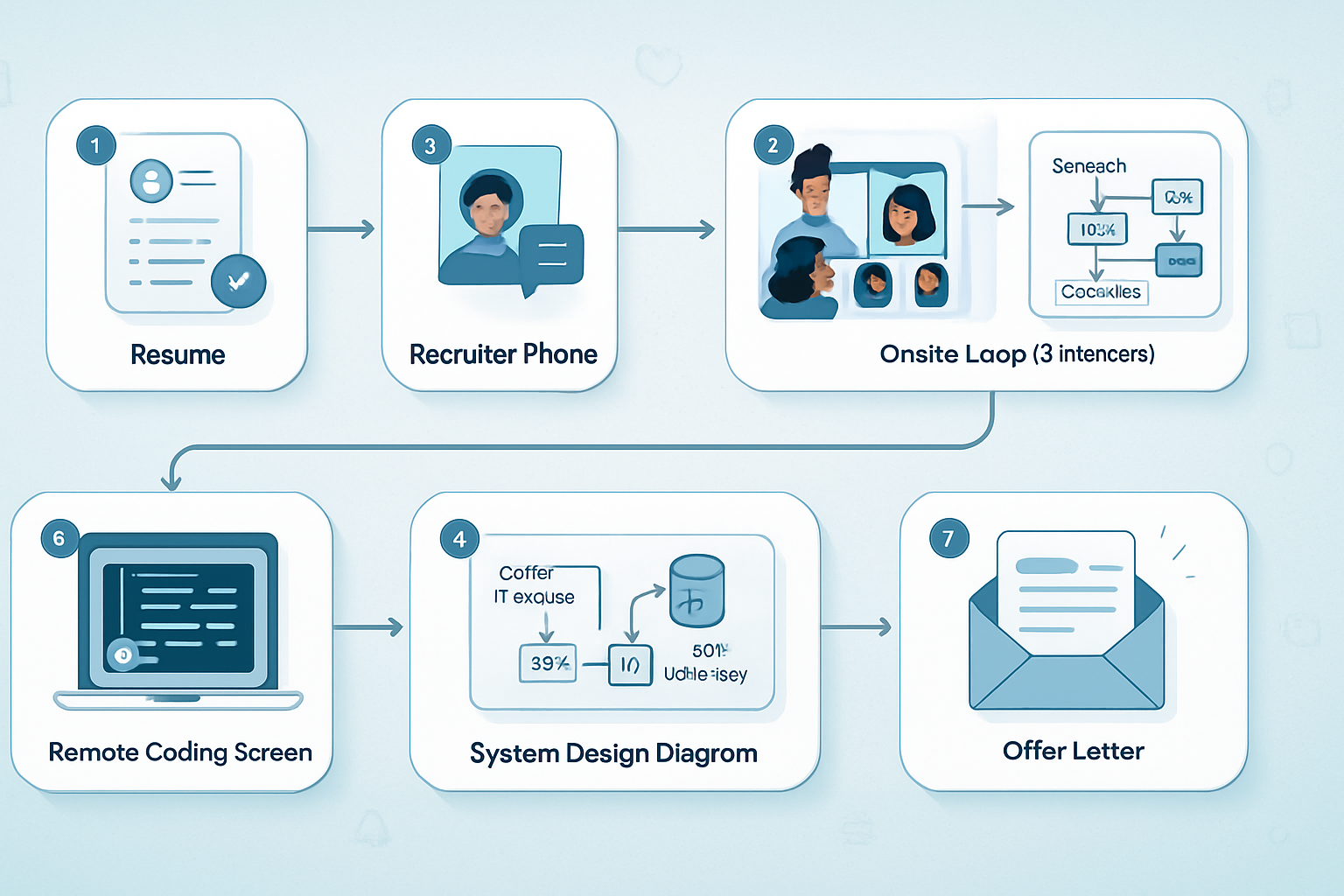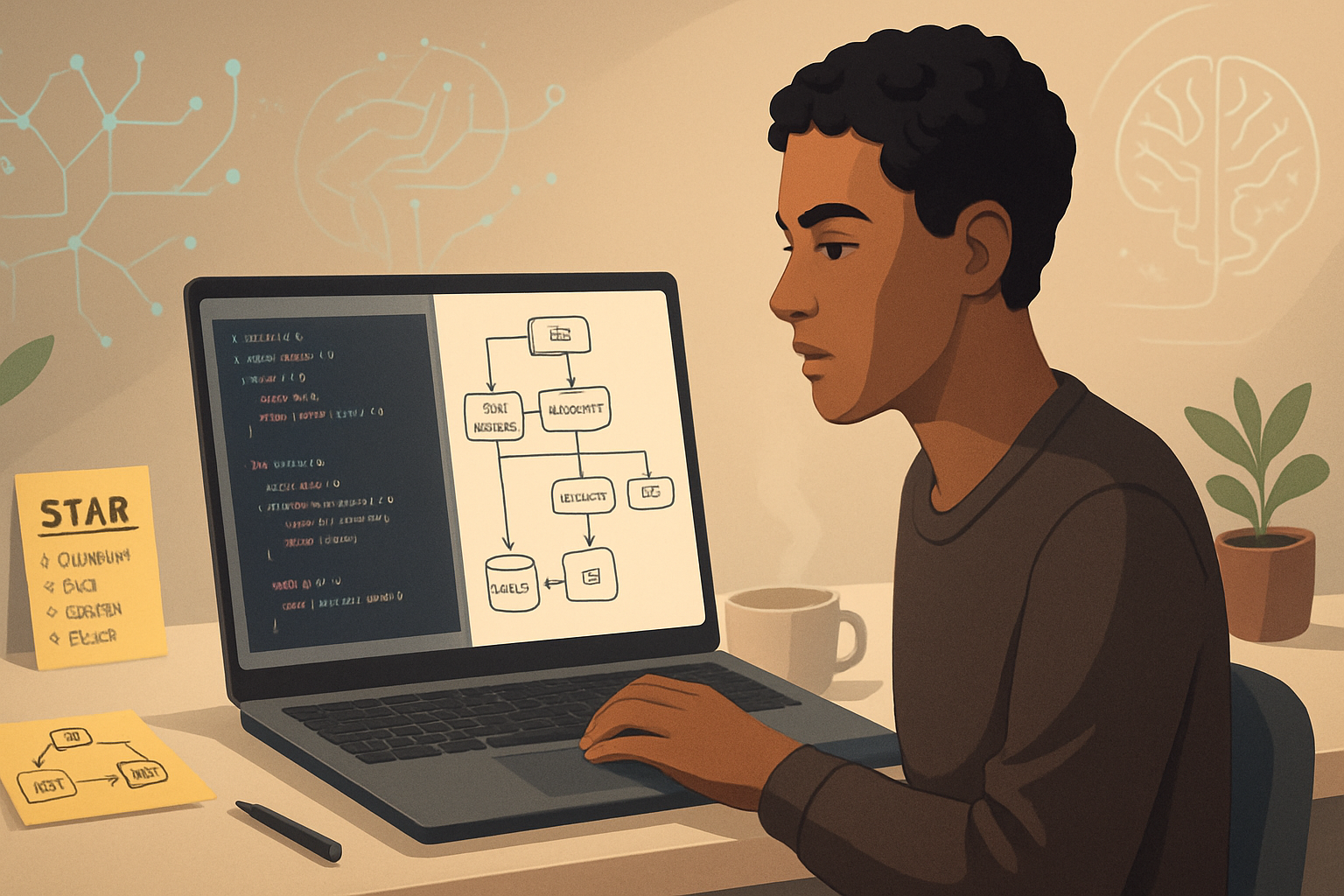· career · 7 min read
Decoding Google's Interview Process: A Deep Dive Into Its Challenges
This deep-dive explains what makes Google's software engineer interviews uniquely challenging, the question types you'll face, how decisions are made, and concrete strategies - supported by candidate insights - to help you navigate the loop and improve your odds.

Outcome-first: after reading this article you’ll be able to design a focused study plan, recognize the problem patterns Google favors, handle each stage of the interview loop with a clear playbook, and avoid the most common mistakes that derail otherwise strong candidates.
Why Google’s interviews feel different - and why that’s intentional
Google screens for three things simultaneously: raw algorithmic problem-solving, engineering judgement (trade-offs, scalable design), and what the company calls “Googliness” - collaboration, bias to action, humility under pressure. That combination explains why interviews are long, structured, and multi-modal: you won’t just write working code. You’ll be expected to communicate, optimize, and show systems thinking under time pressure.
This multi-dimensional bar is enforced by process, not by a single person’s opinion. Google uses a structured loop and a hiring-committee model where multiple interviewers’ feedback is aggregated and reviewed before a hire is approved. Read more about the company’s hiring steps on their careers page: https://careers.google.com/how-we-hire/.
The interview stages - what to expect
- Phone / online screen: 30–60 minutes; often a paired coding exercise in a shared editor or a short take-home problem.
- Onsite loop (now often virtual): 4–6 interviews, each 45–60 minutes, typically including:
- 1–2 coding (algorithms & data structures) interviews
- 1 system design (for experienced candidates)
- 1 role-related knowledge / practical engineering interview
- 1 behavioral / “Googliness” interview
- Hiring committee + final HR checks: interview notes and work samples are aggregated and evaluated.
Each coding interview will expect clean, correct, and reasonably optimized code plus the ability to explain design choices and complexity.
Types of questions you will see (and how to navigate them)
- Core algorithmic problems
- Topics: arrays, strings, hashing, two pointers, sliding window, sorting, trees (DFS/BFS), graphs (BFS/DFS, shortest paths), heaps, dynamic programming, bit manipulation, and math/number theory occasionally.
- Format: medium-to-hard LeetCode-style problems that test pattern recognition and implementation skill.
Strategy:
- Clarify constraints up front (input sizes, memory limits, mutability). Ask concrete questions: “Can I assume the input fits in memory? Are elements unique?” This shapes which algorithmic class is required.
- Start with a brute-force idea to show understanding, then iterate toward an optimal approach and explain the complexity trade-offs.
- Code with intent: name variables clearly, break the solution into small helper functions if helpful, and narrate while you type. Interviewers grade communication as much as correctness.
- Always include complexity analysis and a few tests including edge cases.
Example walkthrough: two-sum (classic, but shows process)
# Python example (representative style)
def two_sum(nums, target):
# Clarify: return indices? assume one solution exists
seen = {} # value -> index
for i, n in enumerate(nums):
diff = target - n
if diff in seen:
return [seen[diff], i]
seen[n] = i
return []Talk through correctness, complexity (O(n) time, O(n) space), and what changes if duplicates or multiple solutions are allowed.
- System design (for mid-to-senior roles)
- Focus: high-level architecture, scalability, data modeling, APIs, trade-offs, and bottlenecks.
- Typical prompts: design a URL shortener, a chat service, or a real-time collaborative editor.
Strategy:
- Spend the first 2–3 minutes clarifying scope (QPS, number of users, data retention). Set high-level requirements: functional vs non-functional.
- Sketch components (API gateway, load balancer, databases, caching layer, message queues), justify technology choices, and explain capacity planning (throughput, storage calculations, sharding strategy).
- Drill-down on 1 component the interviewer cares about (e.g., the data model or consistency model). It’s better to go deep on one area than to surface-skim everything.
- Role-related / practical engineering
- Tests on code quality, debugging, performance profiling, or language-specific questions. Example: memory layout, concurrency primitives, or performance tuning.
Strategy:
- Keep answers practical. When asked about a bug/fix, narrate the debugging steps and metrics you would use in production.
- Bring past experience (briefly) to illustrate pattern recognition.
- Behavioral / Googliness
- Google’s behavioral interviews probe leadership, collaboration, ownership, and ethics.
- Use the STAR framework: Situation, Task, Action, Result.
Strategy:
- Prepare 6–8 stories that showcase impact, conflict resolution, mentorship, and failure. Frame them concisely and highlight measurable outcomes.
- Be specific: quantify results, and state what you learned.
How interviewers evaluate you (what really matters)
- Correctness: your solution must handle core cases and not produce obvious bugs.
- Problem-solving process: do you break the problem down, present options, and choose rationally?
- Coding style and clarity: readable code, reasonable naming, and test cases.
- Optimization & trade-offs: do you know whether to optimize and when it costs too much complexity?
- Communication: narrating your thoughts, asking clarifying questions, and incorporating interviewer hints.
- Team fit: curiosity, humility, and the ability to receive feedback.
Remember: the hiring committee aggregates these signals. That reduces randomness, but it also means a weak performance in any single dimension can outweigh strength in another.
Real candidate insights - what worked for people who got offers
Below are anonymized, aggregated patterns from successful candidates (from public interview writeups, forum threads, and postmortems):
“I focused on clarity over cleverness.” Several candidates said that writing clear, maintainable code and narrating it beat trying to cram micro-optimizations into an already complex solution.
“I practiced mock interviews under realistic constraints.” Candidates who scheduled timed mocks and had strangers (or coaches) interrupt with questions felt significantly better at handling the pressure.
“I always asked clarifying questions first.” This often turned a novel-looking question into a variant of a known pattern.
“When I hit a wall, I narrated my options.” That helped interviewers steer without feeling you were stuck in silence.
“I prioritized test cases before returning final code.” Edge cases and small tests consistently made interviewers more confident in the candidate’s rigor.
You can find many candidate write-ups for inspiration at LeetCode Discuss (https://leetcode.com/discuss/) and Glassdoor interview experiences (https://www.glassdoor.com/Interview/index.htm).
Common mistakes that cost candidates the job
- Not asking clarifying questions (assumes constraints incorrectly).
- Rushing to code without a plan (leads to messy fixes and bugs).
- Ignoring edge cases or failing to test simple inputs.
- Silent pauses with no narration - interviewers can’t read minds.
- Overengineering early; not iterating from simple to optimal.
- Treating behavior questions as an afterthought.
Concrete, time-bound preparation plan (8–12 weeks)
Week 1–2: Baseline and fundamentals
- Take 10 practice problems across arrays, strings, and trees to gauge speed.
- Review Big-O, common data structures, and recursion patterns.
Week 3–6: Systematic practice
- Solve 3–5 problems per week focused on different patterns (sliding window, DP, graphs). Use resources like LeetCode (https://leetcode.com/) and the Tech Interview Handbook (https://yangshun.github.io/tech-interview-handbook/).
- Begin weekly mock interviews (peer or coach). Focus on communication.
Week 7–9: System design and role knowledge
- Study system design basics: caching, CDNs, sharding, CAP theorem. Practice 1–2 designs per week.
- Review language-specific internals and concurrency if applicable.
Week 10–12: Final polishing
- Simulate full interview loops (4 rounds, back-to-back) at timed intervals.
- Prepare your behavioral stories and run them with a friend.
- Light practice on last-minute weak areas.
On the day: a tactical playbook
- 0–2 minutes: Clarify constraints, ask about return types and input sizes.
- 2–7 minutes: Propose a brute-force solution and complexity.
- 7–20 minutes: Iterate toward an optimal approach; discuss trade-offs.
- 20–40 minutes: Implement, narrate, and test.
- Last 5 minutes: Summarize, discuss further optimizations, and ask questions for the interviewer.
If you get stuck: say what you tried, what you think could work, and ask for a hint. Silence is worse than a wrong path that you can later correct.
After the interview: debrief and growth
- Immediately capture notes on what you did well, what you missed, and which patterns surprised you. This is high-value feedback for your study plan.
- If you get rejected, ask for feedback (HR often gives high-level comments). Use that to prioritize practice.
Quick resources
- Google careers - How we hire: https://careers.google.com/how-we-hire/
- LeetCode main site and Discuss: https://leetcode.com/
- Tech Interview Handbook: https://yangshun.github.io/tech-interview-handbook/
- Cracking the Coding Interview (book) - for classic patterns: https://www.crackingthecodinginterview.com/
Final checklist before you walk into the loop
- You can explain 8–10 core patterns (two pointers, sliding window, DFS/BFS, DP variants).
- You have 6–8 STAR behavioral stories ready.
- You can do a basic system design live for a 30–60 minute slot.
- You practiced mock interviews under time pressure and with interruptions.
- You will narrate: clarify, propose, iterate, implement, test.
If you do those things reliably, you’ll convert more interviews into offers. Google’s loop is rigorous, but it’s also fair: show your thinking and your engineering instincts, and the process is designed to find that out. Go in ready to communicate and to learn from each round - and remember: the best outcome is not just a passed interview, but a clearer, higher-quality approach to engineering problems that will serve you long after the loop ends.



